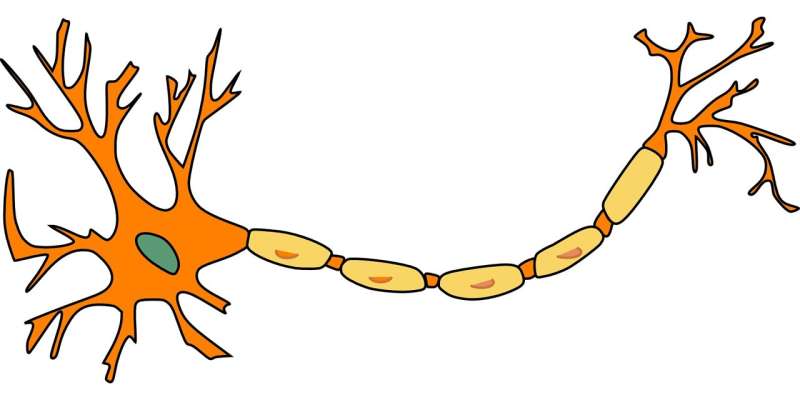This article has been reviewed according to Science X's editorial process and policies. Editors have highlighted the following attributes while ensuring the content's credibility:
fact-checked
reputable news agency
proofread
Q&A: Cancer of the nerve cells

My 4-year-old niece recently was diagnosed with neuroblastoma after not feeling well for a few weeks. Her parents noticed her belly was swollen, so they took her to the doctor after it didn't resolve on its own. I'd never heard of this form of cancer before. What is neuroblastoma? Do children typically have surgery to treat this cancer? What can we expect?
ANSWER: Neuroblastoma is a type of cancer that occurs almost only in children and develops from abnormal nerve cells. It is the most common cancer in babies under 1 year old and makes up nearly 10% of cancers in children. Neuroblastoma often happens in one of the adrenal glands, which sit on top of the kidneys. However, it also can occur in the chest and abdomen near the spine.
Sometimes children are born with neuroblastoma, and it can even be detected before birth on an ultrasound. Most commonly, it is found when children have a mass in their abdomen. They also might be tired, have fevers and not eat as much as usual. Sometimes it can cause weakness from being too close to the spinal cord.
There are multiple tests and procedures used to diagnose neuroblastoma. Children usually have imaging tests such as a CT or MRI scan to look for neuroblastoma. They also will have a urine study to look for substances that can be released by the tumor, known as homovanillic acid (HVA) and vanillylmandelic acid (VMA). Patients usually need a metaiodobenzylguanidine (MIBG) scan that looks specifically for neuroblastoma and helps determine if cancer has spread to other body areas.
Before starting treatment, children may undergo a biopsy procedure so a pathologist can look at the tumor under a microscope and confirm the diagnosis. The tumor sample also is sent for special genetic testing to help identify the best treatment strategy. A bone marrow biopsy also may be performed to ensure the neuroblastoma has not spread to the bone marrow.
Neuroblastoma has a unique staging system that establishes whether a patient should be classified within a low, intermediate or high-risk group. The risk group helps determine what treatment children with neuroblastoma should receive.
In some babies and young children, neuroblastoma can be watched and may go away on its own. Surgery may be recommended for other children as the first treatment or after chemotherapy is administered to shrink the tumor.
Surgery for neuroblastoma often can be performed minimally invasively, which helps children have less pain and recover faster after their operation. Sometimes additional surgery is needed to remove neuroblastoma that has spread to other areas of the body. Some neuroblastoma tumors can wrap around essential blood vessels or other structures, requiring skilled surgical teams to remove them without causing damage.
Other treatments for neuroblastoma, besides surgery and chemotherapy, may include radiation therapy to kill cancer cells, stem cell or bone marrow transplant, and immune therapy. Children who need treatment beyond surgery usually have a type of long-term IV placed, called a central line, so they can get IV medications and check blood work without frequent pokes. Treatments for neuroblastoma often require children to be hospitalized.
Because neuroblastoma is rare and requires a tailored approach to treatment, it is essential for children to receive care from a multidisciplinary team with expertise in this disease. Seeking treatment from a center, such as Mayo Clinic, that offers clinical trials also is important so children with neuroblastoma can access new potential treatment discoveries. Mayo Clinic participates in cooperative clinical research trial networks, including the Children's Oncology Group, and is designated by the National Cancer Institute as a comprehensive cancer center.
Though each person is different, neuroblastoma cancer can be effectively treated. Babies and younger children are more likely than older children to stay cured of neuroblastoma long term.
2023 Mayo Clinic News Network.
Distributed by Tribune Content Agency, LLC.



















